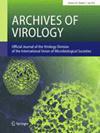Genetic and biological characterization of African swine fever virus clones selected at the early stages of adaptation in Vero cells
Abstract
African swine fever is a highly contagious viral disease affecting domestic pigs and wild boars, caused by African swine fever virus (ASFV). ASFV exhibits highly restricted cell tropism, primarily targeting porcine macrophages for efficient and stable replication. This strict requirement for a specific cell type has posed significant challenges in ASFV research and remains a critical obstacle to vaccine development. Although several cell lines have been reported to support ASFV replication, significant genetic changes occur during passages in cell lines in unpredictable ways. In this study, we adapted a highly virulent Korean ASFV isolate to Vero cells, and plaque purification was employed during the early stages of cell adaptation to eliminate the competitive pressure between viral subpopulations. Three viral clones with distinct genetic properties were obtained and passaged independently up to 30 times. The three clones replicated efficiently in porcine alveolar macrophages (PAMs) and Vero cells even after 30 passages, while the parent virus did not grow in Vero cells. Genetic analysis revealed that the cell-adapted viral clones shared multiple single-nucleotide polymorphisms (SNPs) but also had unique SNPs and large deletions in their genome. This diversity of mutations in these clones could provide a valuable model for exploring gene functions and their effects on phenotypic properties. Future studies will focus on evaluating the phenotypic effects of these SNPs in vivo to support vaccine development.


 求助内容:
求助内容: 应助结果提醒方式:
应助结果提醒方式:


